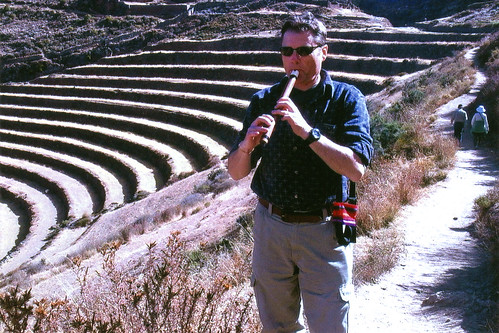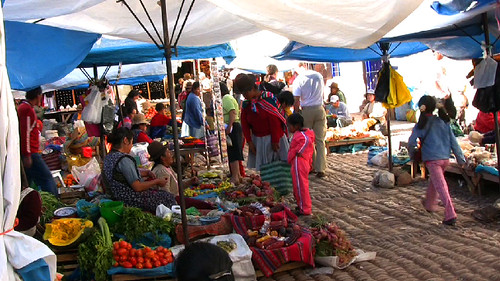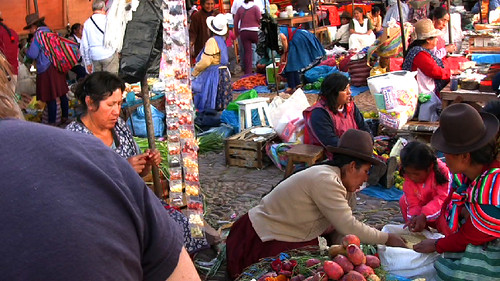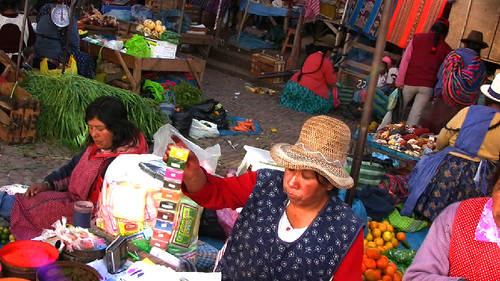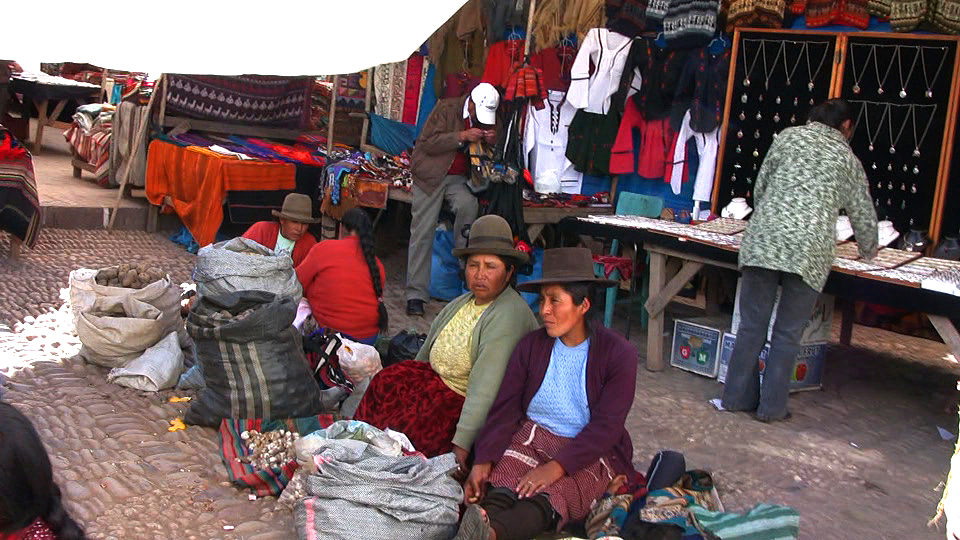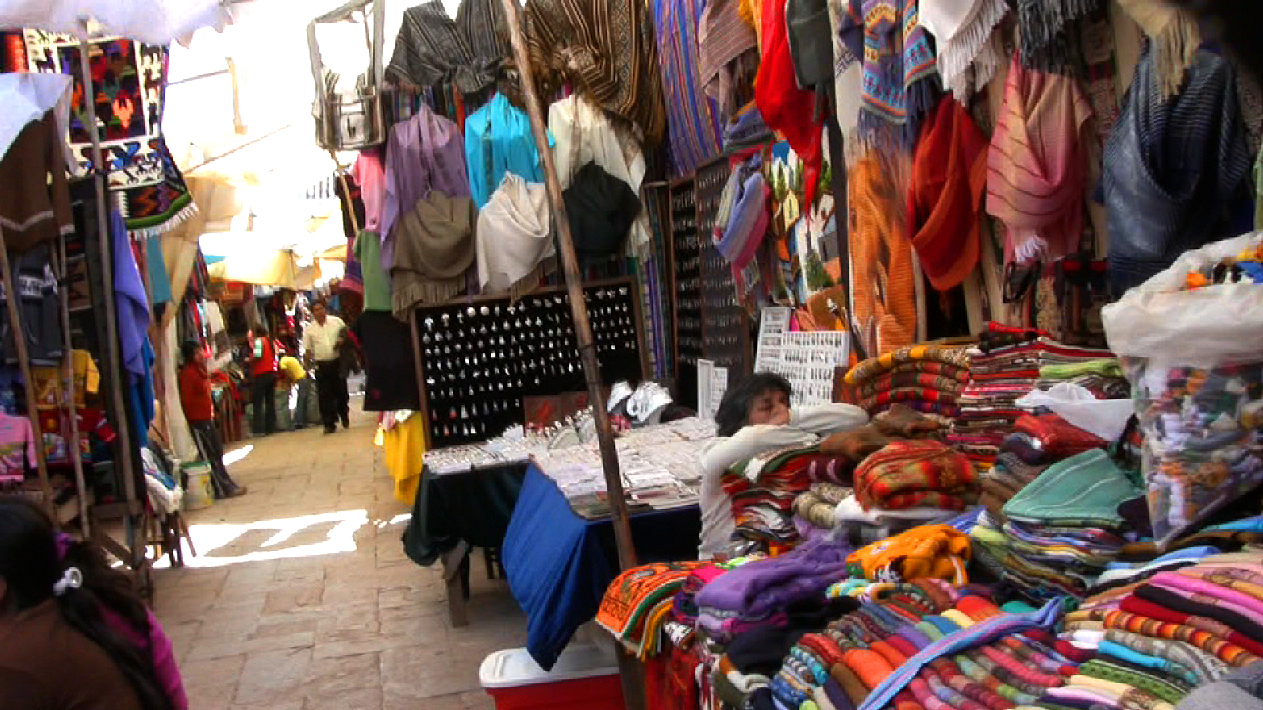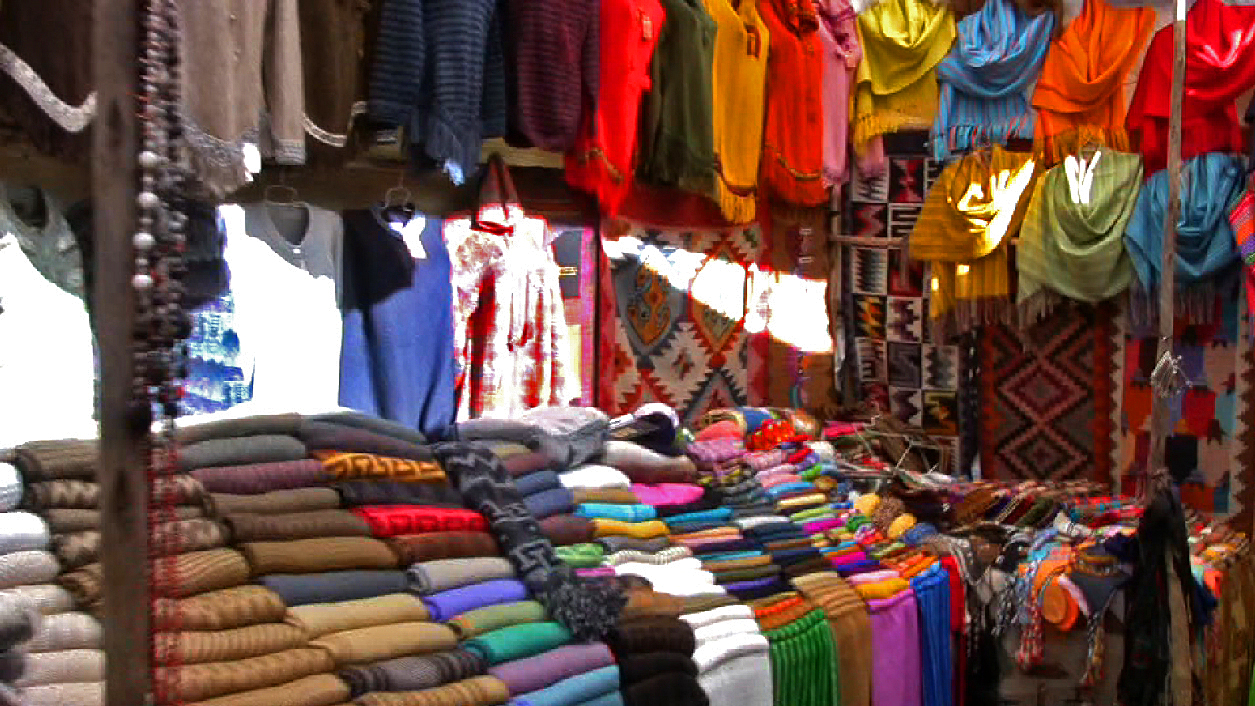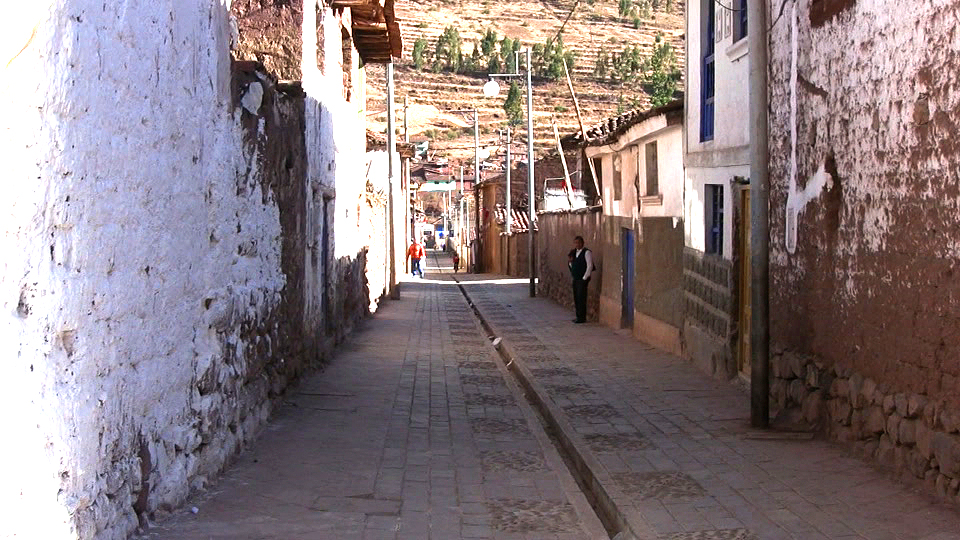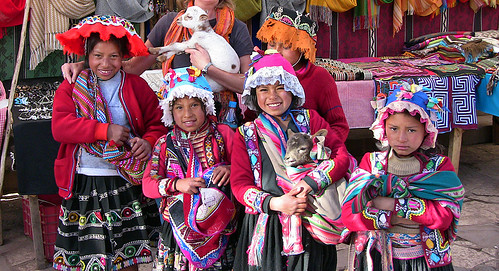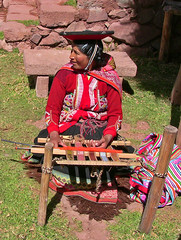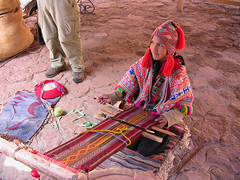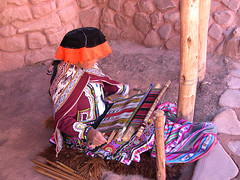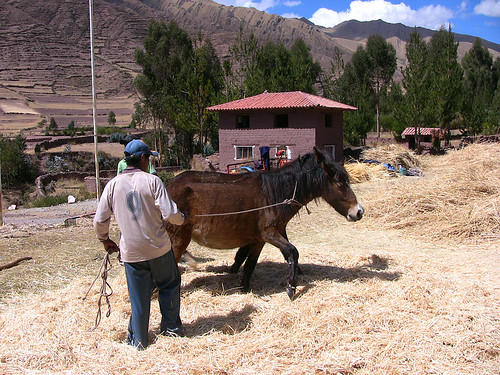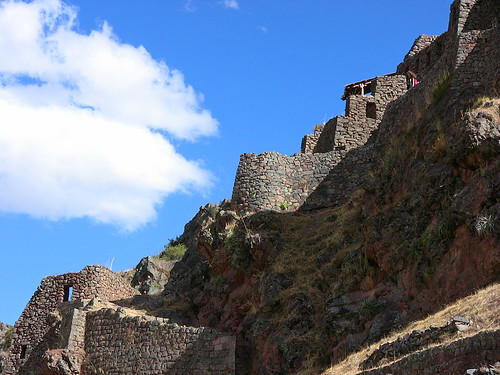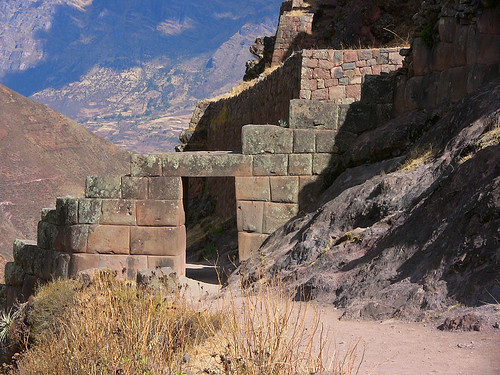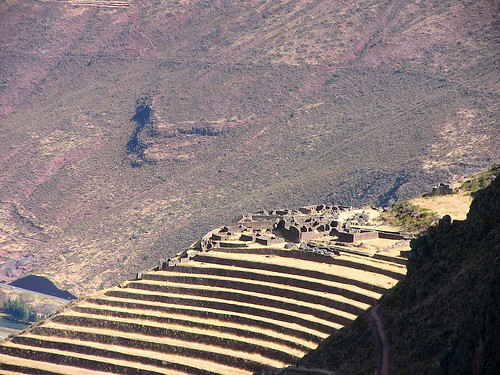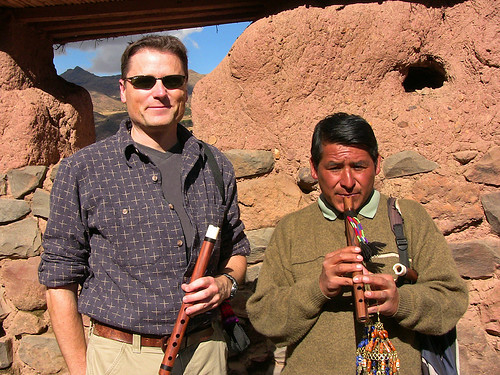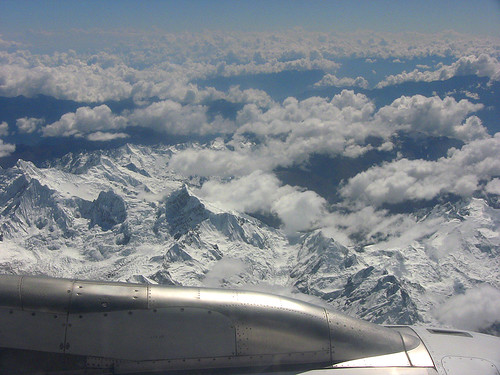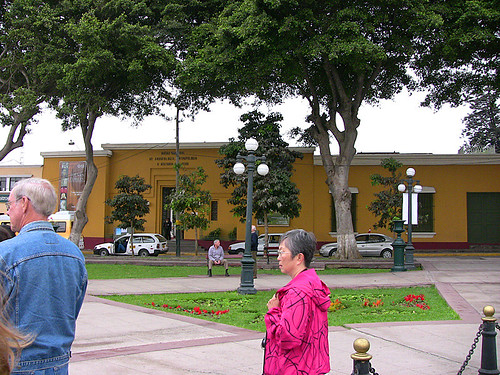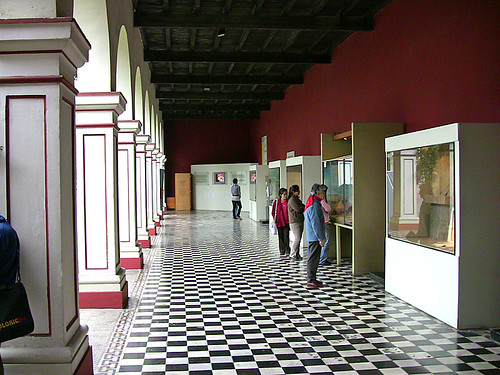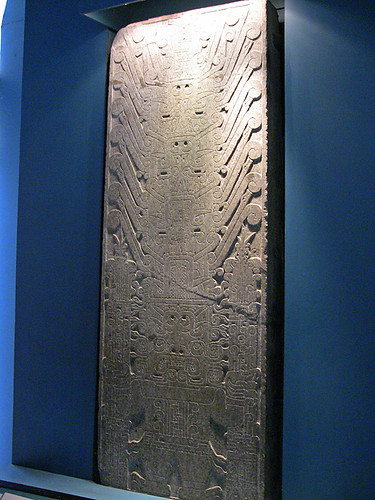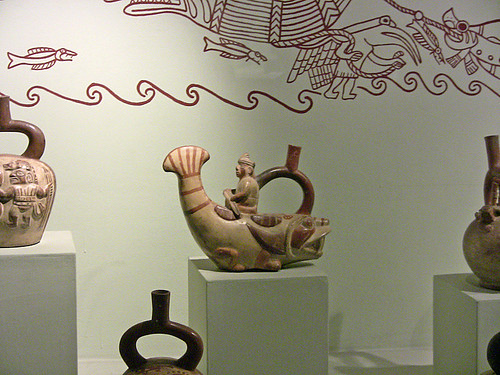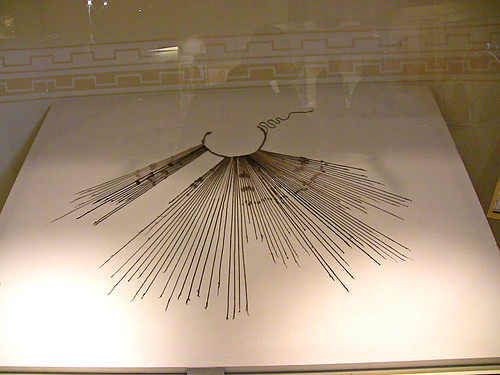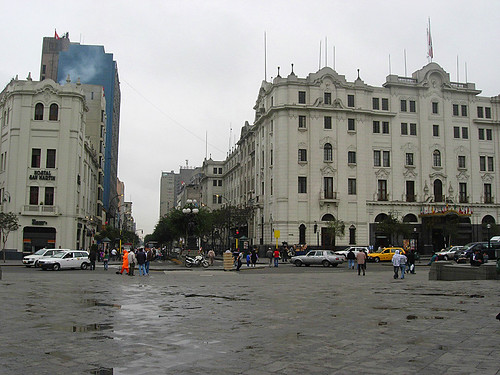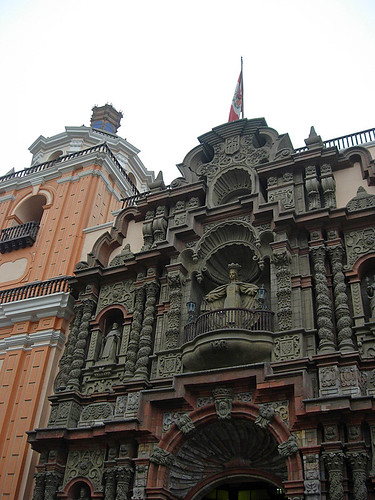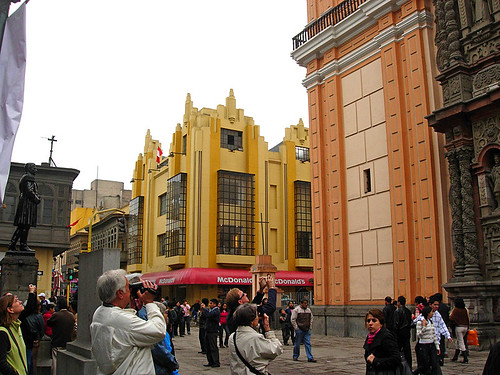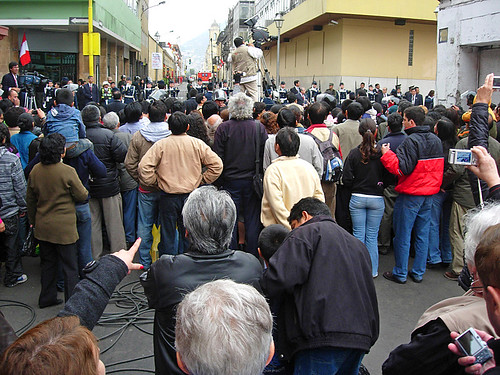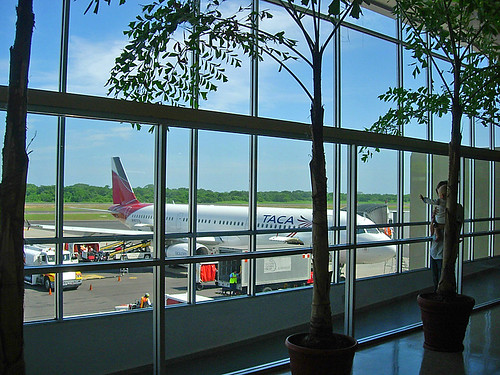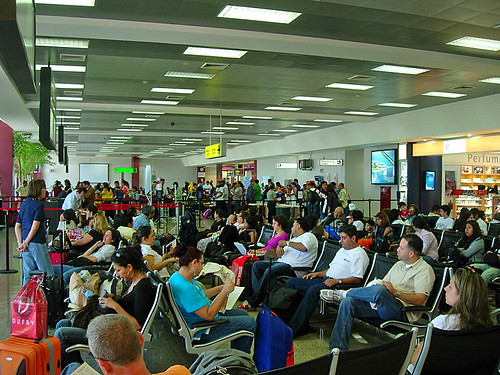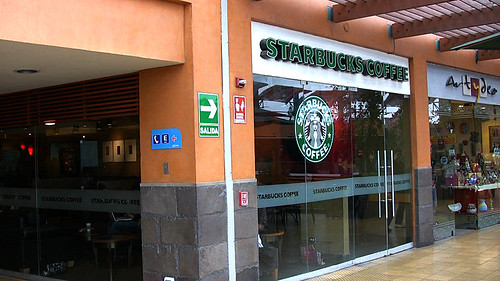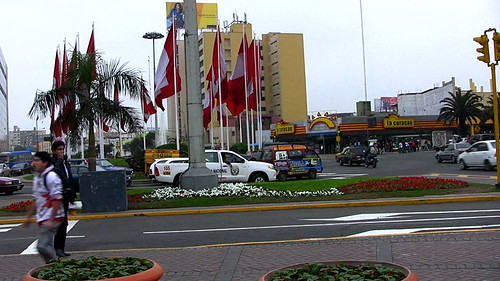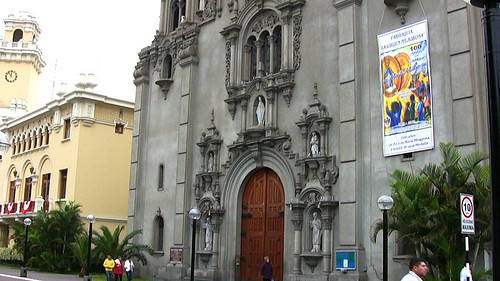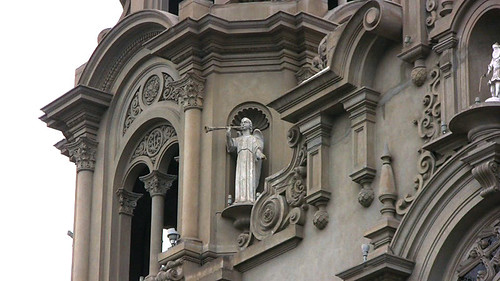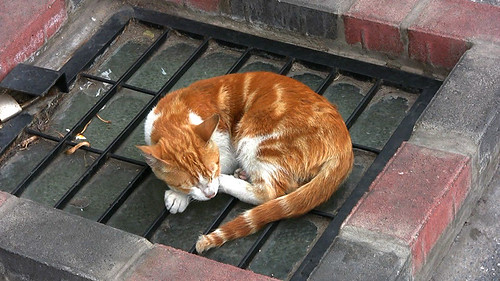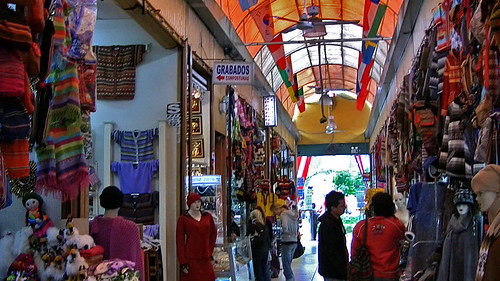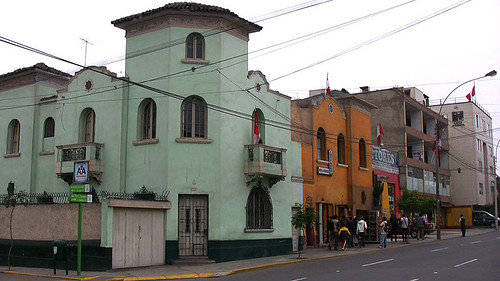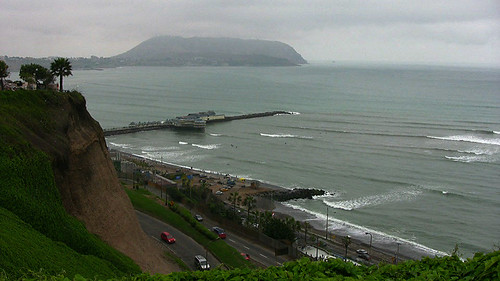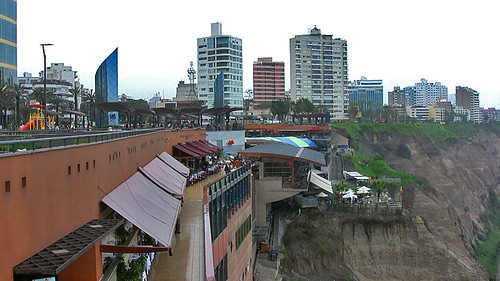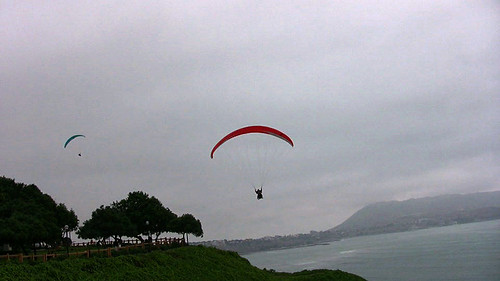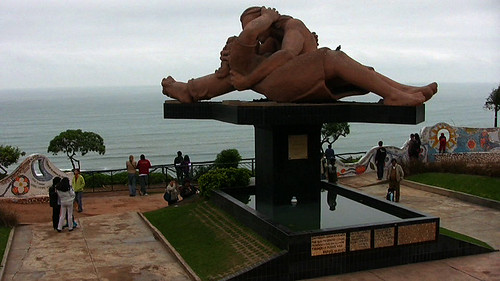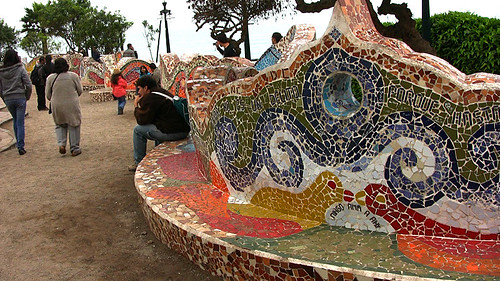Day two in the Sacred Valley began with a trip to a local Chicha (corn beer) brewery, but there was more there than just beer. We got a glimpse into Quechua culture. The name of the brewery was Descanso, which means "rest" in Spanish, and the name fit it well. It was a quiet place right off the main road through the valley, where once behind it's walls you felt a sense of peace from the rest of the world. The walkways and patio had flowers growing up them. Tall trees reached high over the back patio and the mountains of the valley hung above the rooftops like sentinels. Descanso is not just a brewery but a social place to go to drink the corn beer they make there, called Chicha by the Spanish and Aha in the Quechua language, have some food, meet friends, and play a coin toss game called Sapo.
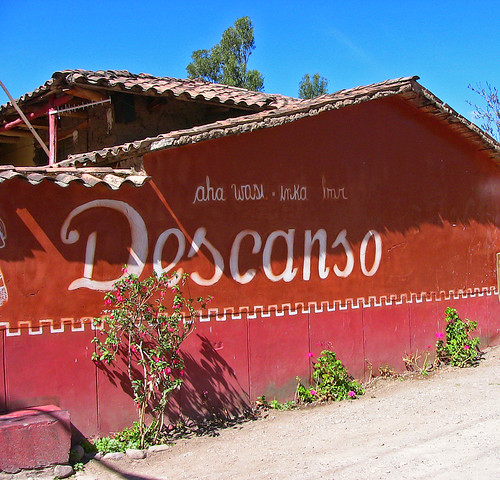
Click to enlarge
We arrived early in the morning and were greeted by Mercedes, the Chicha maker and owner of Descanso. Like many of the Quechua we met she was shy and quiet, but very friendly too.
While things were getting set up for us to see how the beer was made and then taste some we wandered around the grounds. From the patio was a beautiful view of the Sacred Valley.
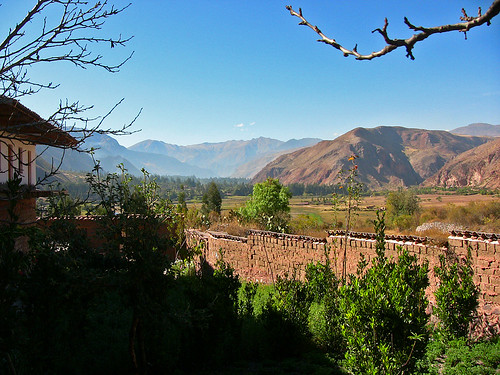
Click to enlarge
GUINEA PIGS
One of the more interesting, and for some, controversial parts of Quechua culture is the eating of Guinea Pigs or as they are called in Quecha Cuy: "koo-ee". The consumption of guinea pigs dates back to pre Inca times. During the reign of the Incas it was reserved as a royal food for the upper class. Today it is eaten on special occasions, like birthdays, holiday and any other celebration. Some of the people in our group found this really upsetting. Every culture eats something that people from outside of that culture find strange or uncomfortable. While exploring the Pacific Northwest Lewis and Clark preferred eating dogs to salmon, something I think most people from the U.S. would find bizarre and upsetting today. The fact that the Peruvians eat guinea pigs was all the more surreal since there were billboards in Lima promoting the film G-Force, a cartoon about secret agent guinea pigs.
At Descanso, as a small business, they raised guinea pigs for sale. They lived in their own room which opened off the patio and we were invited to look in and take photos.
Click to play
The guinea pigs squeaked and nibbled on their food while we poked our heads through the door. Our guide Fredy tried to explain the unexplainable. They eat them, they always have, they don't think of them as pets or name them. By the end of the day those of us that wanted to would be able to taste guinea pig. But the day had just started and that was many hours from now.
SAPO
After checking out the guinea pigs we were introduced to another part of Quechua culture. The coin toss game of Sapo. The word Sapo is Quechau for Frog. The point of the game was pretty simple. There is a table on which a matrix of eight holes is cut. Like a tic-tac-toe grid. In the middle of the grid sits a brass frog, it's mouth facing front toward the player. Coins are tossed from a distance of about six feet at the table. The goal is to get as many coins into one of the holes, each of which has it's own ranking of points. The ultimate goal is to get a coin into the frog's mouth, which has the highest number of points.
Our guide Fredy gave us a demonstration and got a coin into the frog's mouth! He seemed as surprised as the rest of us. Then it was our turn. We grouped into three teams: The Condors, The Pumas and The Guinea Pigs...
Click to play
CHICHA
After our game we gathered in the dinning room of Descanso where Mercedes, the lady of the house/business and brewmeister showed us how Chicha is made. Like all beer a grain, in this case corn, is malted (partially germinated) by soaking in water. For Chicha the corn is soaked for 15 days. The partially germinated corn is then dried in the sun for two days and then ground up. Traditionally this was done by hand using a mano and matate, but today is done by a professional miller. This is then boiled to a wort for three hours, the brewer constantly stirring with a stick. The wort is poured through a grass filter into a giant pot to which yeast is added for fermentation. For Chicha the yeast is part of a starter, like sourdough bread, taken from the bottom of the pot of the last batch of Chicha. It ferments for three days. Unlike beer made from barley, the alcohol is very low, around 3 percent or less, so the beer is traditionally served in a large glasses. Each glass cost about $1 sol, or about 33¢. (In Peru the Sol is like our dollar, even if the dollar is worth three times as much. So for the average Peruvian, especially from the highlands, $1 Sol is a fair amount of money. Nevertheless I sometimes wish a pint of beer here in the U.S. only cost a dollar!) Mercedes told us that she usually drinks a couple glasses a day, her husband having 5 to 6 glasses.

Click to enlarge
As we would see again and again during our time in the highlands, the kitchens of most houses are very basic, yet the meals cooked in them were complex and tasty. Descanso's kitchen was no exception except yet beer was brewed here for sale and consumption. Not what you'd expect a commercial kitchen to look like.
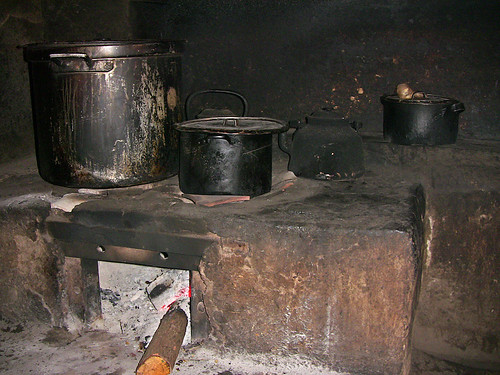
Click to enlarge
Descanso did have a small gas stove (it said so right on the front) which was a luxery compared to the other private kitchens we saw.
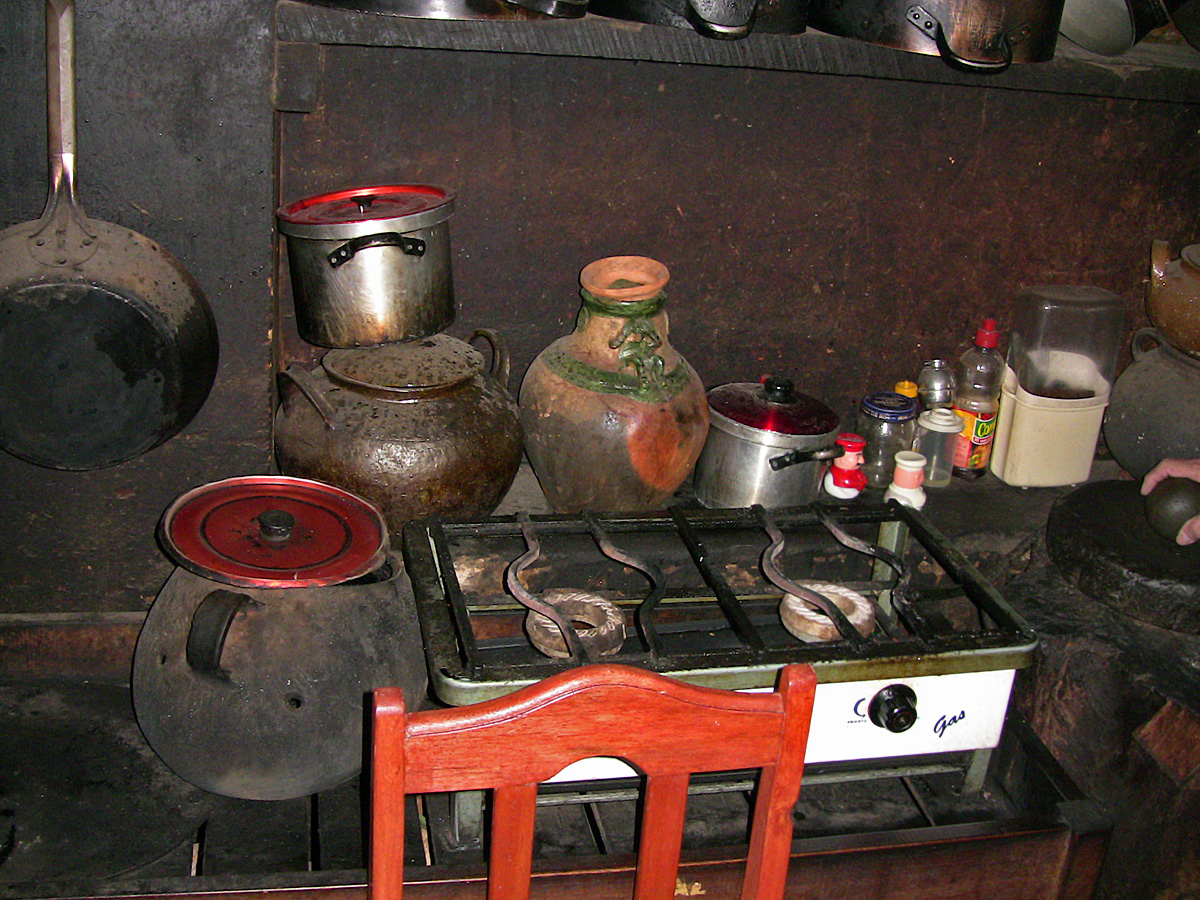
Click to enlarge
Notice in the photo above on the far right center of the image there is a hand holding a mano used to grind food on a metate. A tradition that stretches back thousands of years and is found throughout the Americas.
The final product is Chicha, Aha in Quechuan, which we all got a small taste of. No big glasses for us...
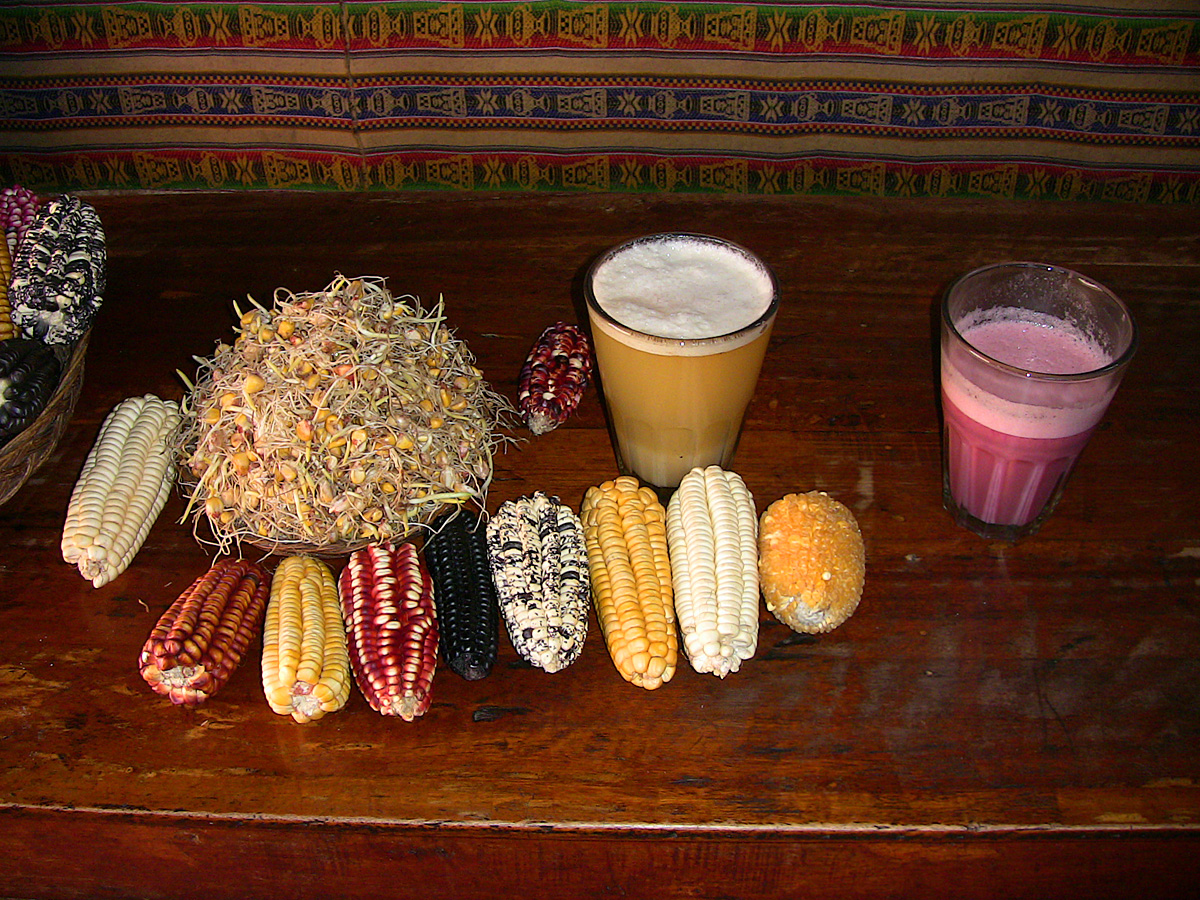
Click to enlarge
In the photo above are the different types of corn used to make Chicha along with a basket of the malted, partially germinated, corn kernels. The glass with the yellow liquid is regular Chicha. The purple Chicha gets it's color from the addition of strawberrys. It was very delious. There is also non-alcoholic Chicha made from a purple corn that is very common and can be found bottled.
Chicha has a milky taste. It's somewhat sweet with a hint of sour and goes down smooth. It does not taste like any beer you'd taste in the U.S. And that's a good thing. Something different.
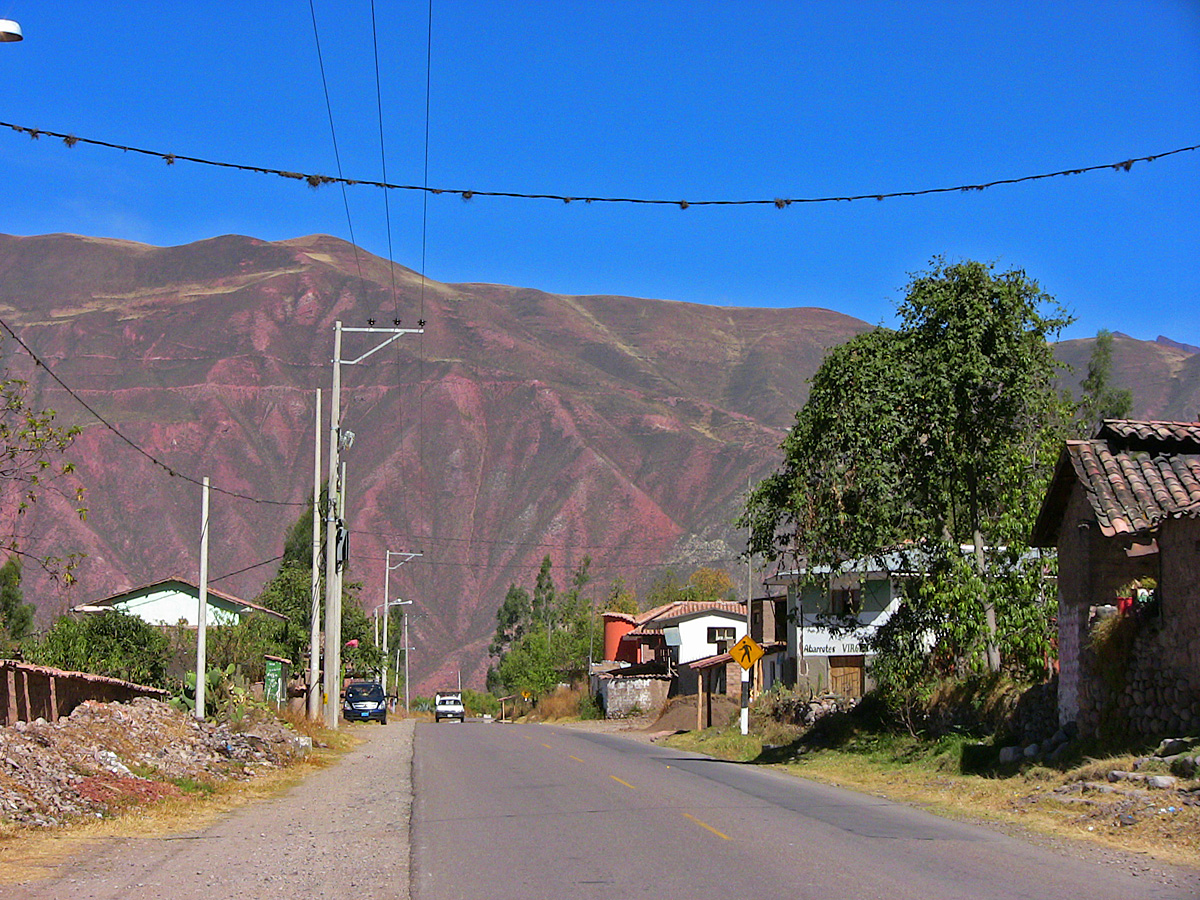
Click to enlarge
ROWING ON THE RIVER
After our Chicha taste we all said "goodbye" to Mercedes and Descanso and headed up the only road through the Sacred Valley, north past the town of Urubamba towards Ollantaytambo, where the road ended and the valley dropped down into the jungle. We were headed to the ruins at Ollantaytambo but first were going river rafting on the Urubamba river. Before you get any images of raging white water let me say that even though the locals claimed the river was currently a class 3, to us it seemed like a wimpy 2. But the skies were clear, the day warm (in the sun), the snow covered mountains loomed in the distant, and that was the plan.
We met up with our guides who gave us a lesson on how to row...
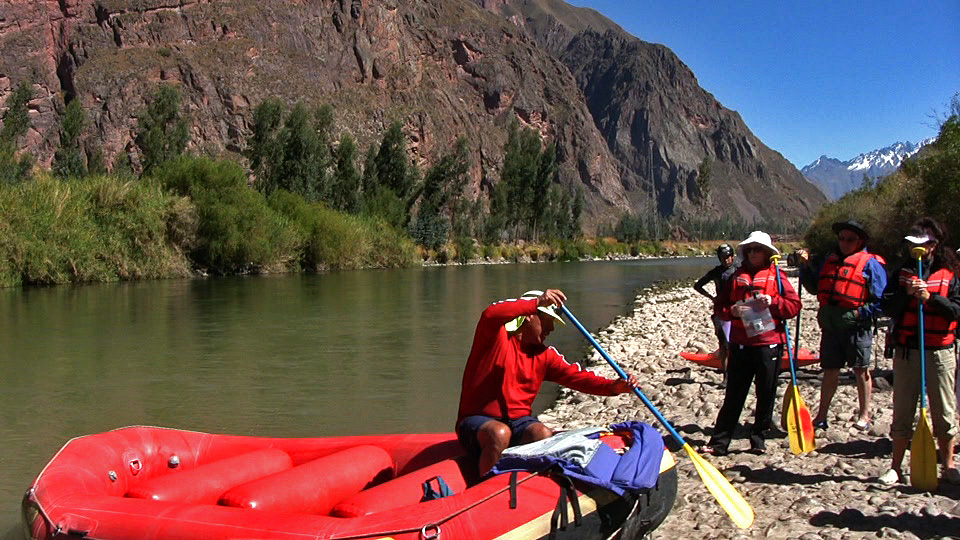
Click to enlarge
Did I mention we all looked like geeks in our river outfits?
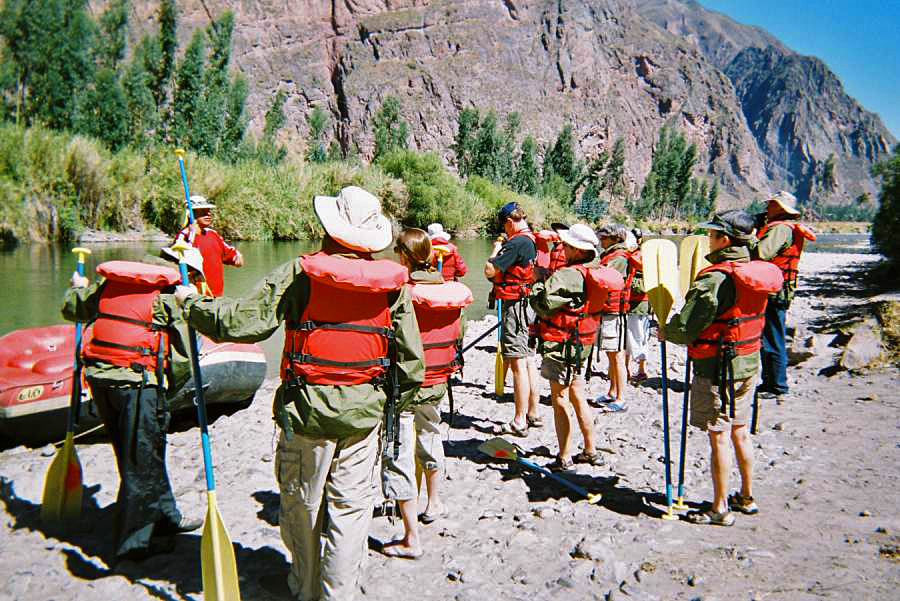
Photo: Mas Yamaguchi
Click to enlarge
So off we went down the raging torrent of the Urubamba

Photo: Mas Yamaguchi
Click to enlarge
Okay, there were a few rapids...

Photo: Mas Yamaguchi
Click to enlarge
We were in two boats. The guide in our boat was very nice but for some reason keep yelling "Pura Vida!" I hate to admit I've forgotten his name.
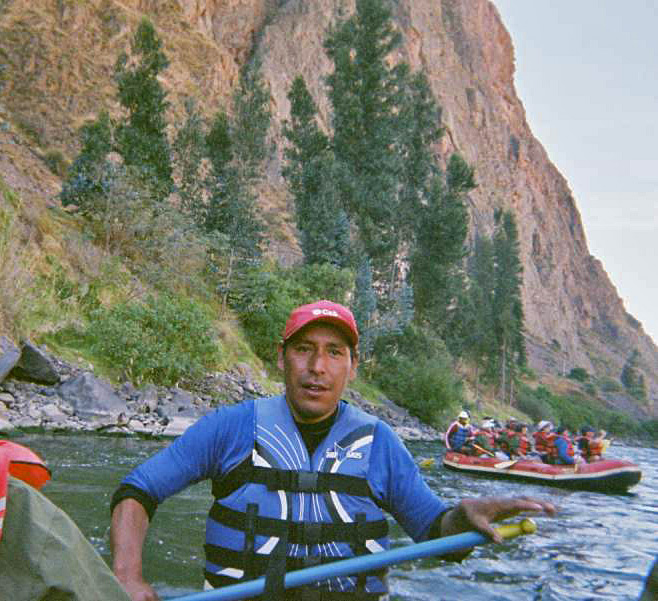
Photo: Mas Yamaguchi
Click to enlarge
Okay, enough snark. Truth be told it was a lot of fun and a beautiful day. No one fell in, heck, no one even got wet. But it was quiet on the water. The sun sparkled on the waves. There were birds in the sky and farm animals on the banks. It was very pastoral. A nice break from the rush of our trip so far.
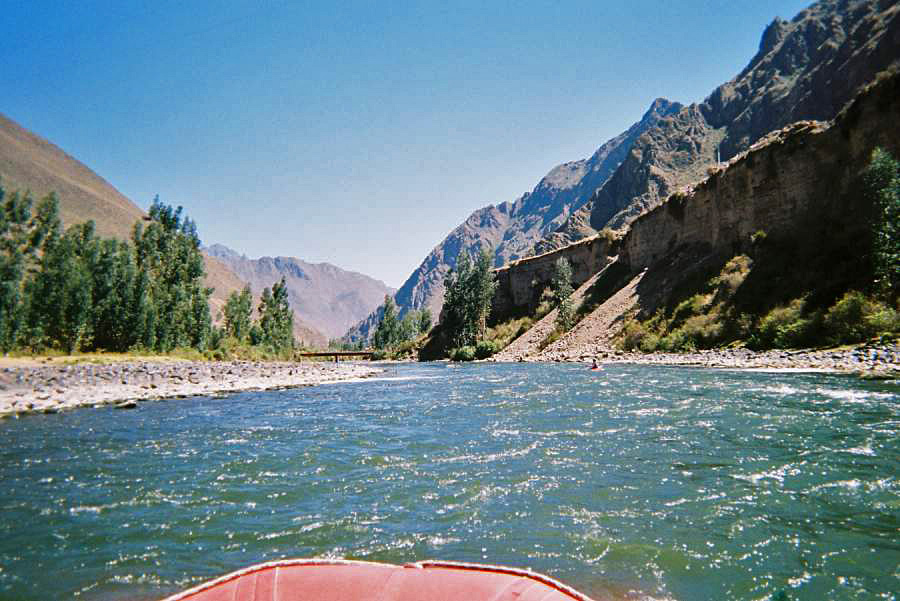
Photo: Mas Yamaguchi
Click to enlarge
Soon enough we were back on the bus and headed to Ollantaytambo. Like Pisac in the southern end of the valley, Ollantaytambo (oh-yawn-tay-tambo) was both a living town and the old Inca fortress above. This is a major site, so I'll stop here and leave that for the next post.
Previous Peru Journals
Part 1: "Journey to Peru"
Part 2: "Lost in Translation"
Part 3: "Flight of the (Silver) Condor"
Part 4: Inca Pisac
Part 5: The Pisac Market
© 2009 Cedar Mesa Music
All Photos and video © Cedar Mesa Music except where noted.
